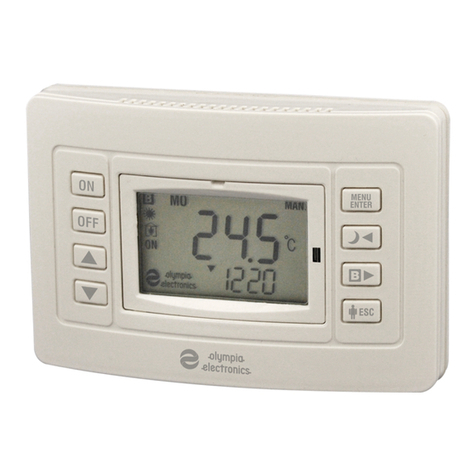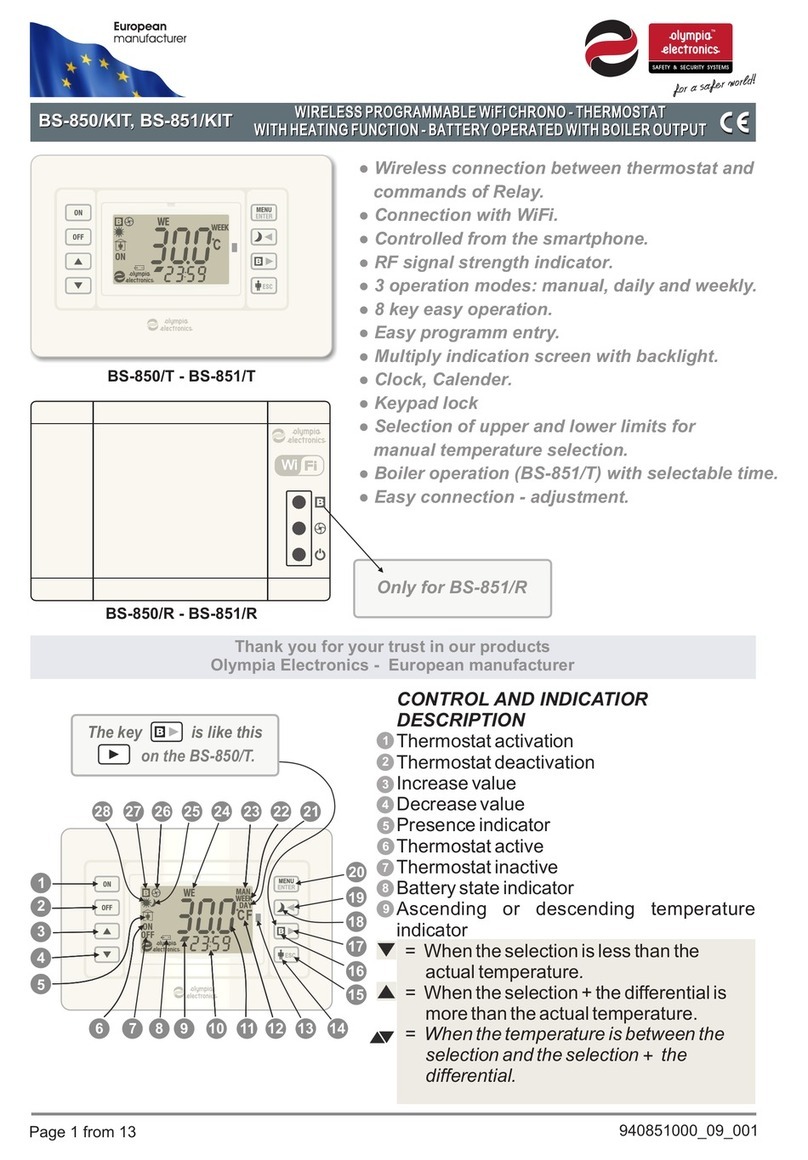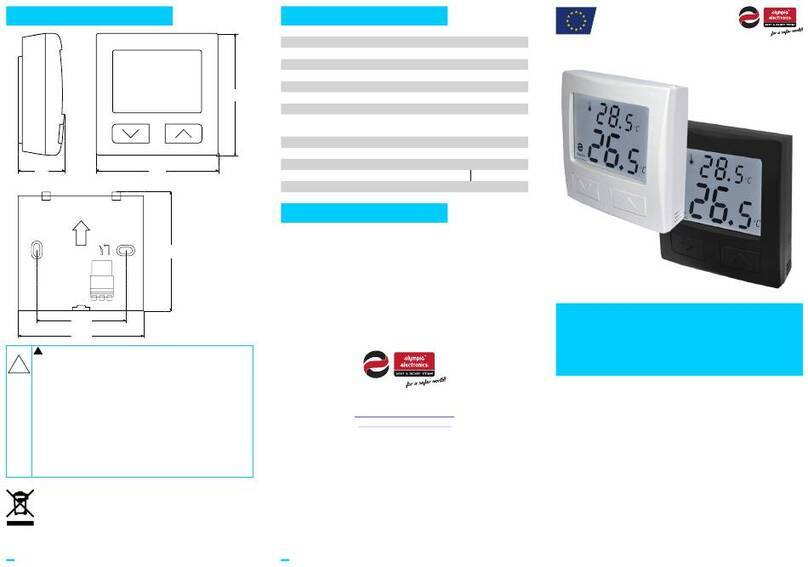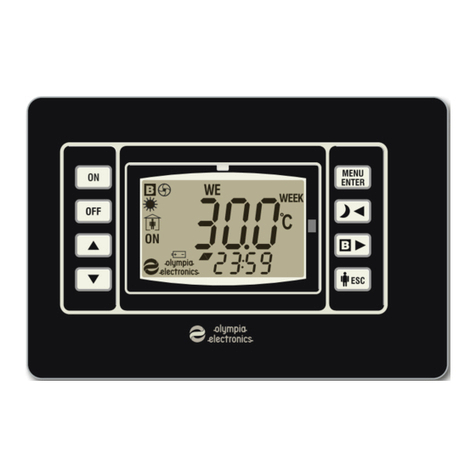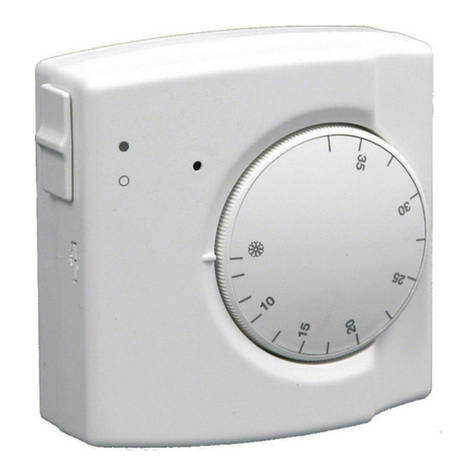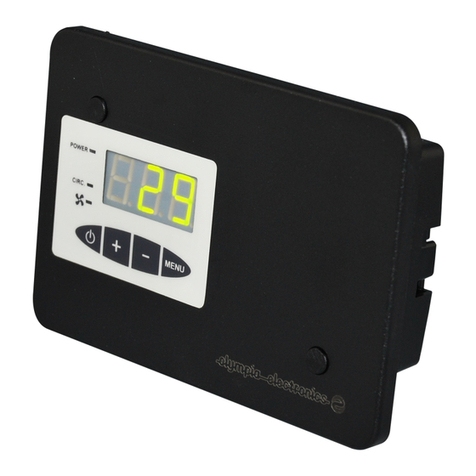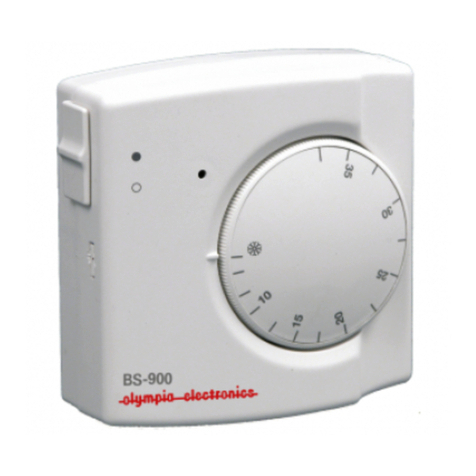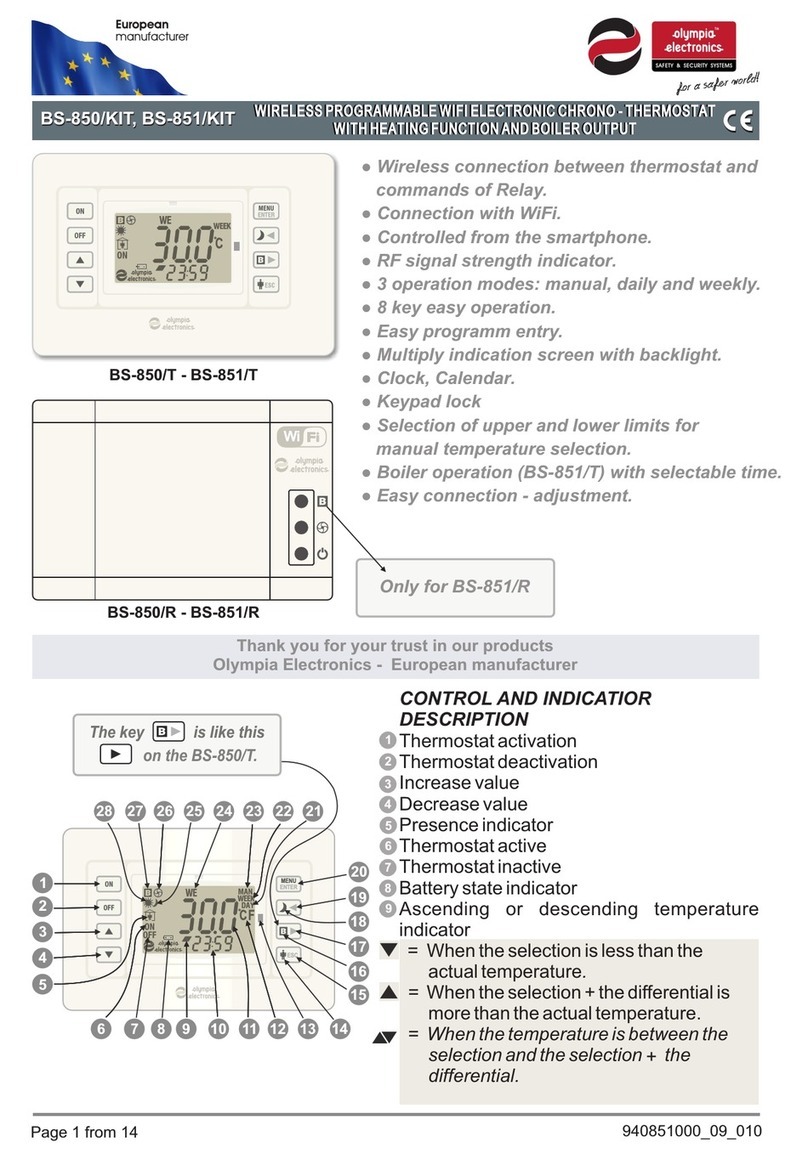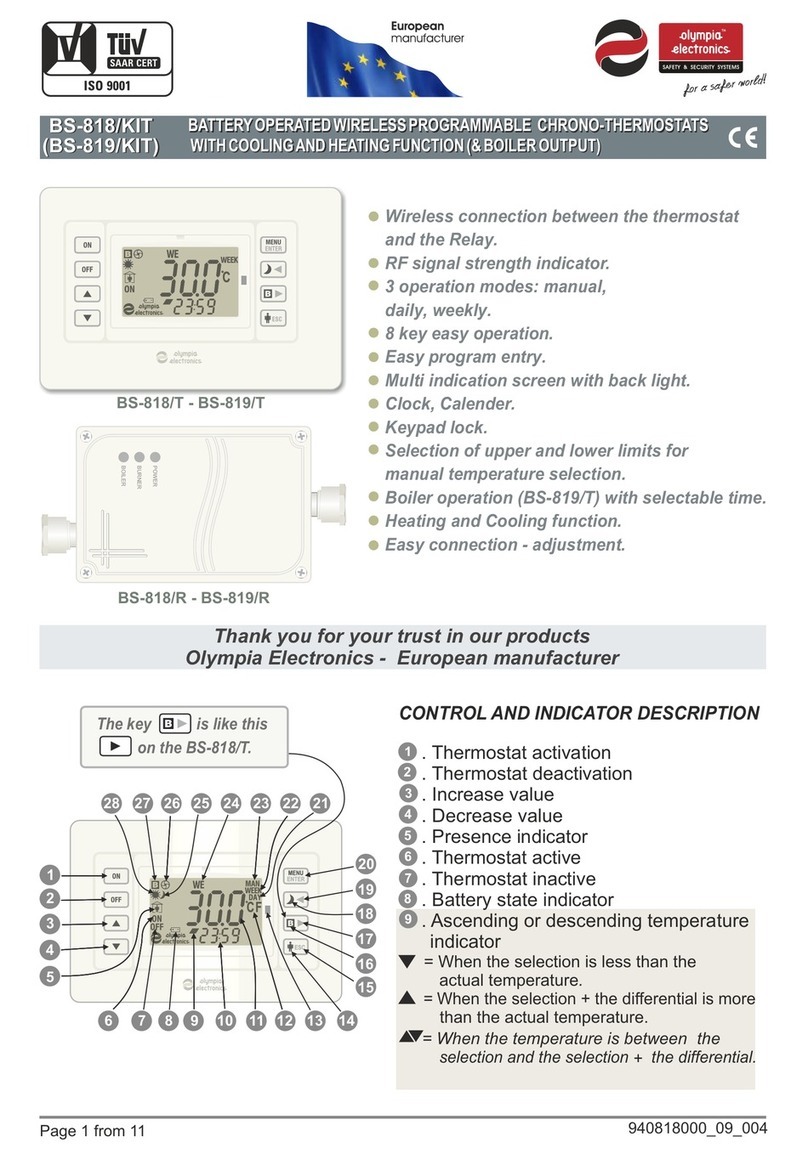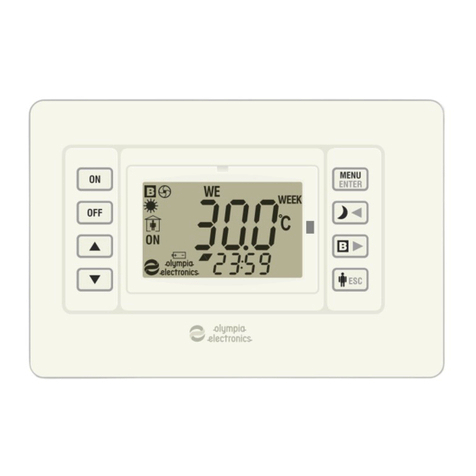
Page 3 from 4 940817000_09_002
8.2. “DAY OF WEEK” ADJUSTMENT
In this screen we can adjust the current day.
Select the desired day of the week using the keys and and .
With the ENTER key we confirm the setting and return to the
ADJUSTMENTS screen.
8.3. “DIFFERENTIAL”ADJUSTMENT
In this page we can adjust the differential of the thermostat according
to which all automatic and manual programs are executed.
With the keys and adjust the differential from 0,2 oC to 4 oC,
with 0,1 oC resolution.
With the ENTER key we confirm the setting and return to the
ADJUSTMENTS screen.
8.4. FACTORY PRESETS
This screen has two selections.
8.4.1. 21 DEG. CONTINUOUS
This preset, if selected stores in the thermostats program memory a
predefined operation program where the desired temperature is kept
constant at 21 oC all days of the week.
With the ENTER key we confirm the setting and return to the
ADJUSTMENTS screen
8.4.2. 21 DEGREES WEEKLY
This preset is shown only if weekly programming has been selected.
A preset program is stored into memory according to which the
adjusted temperature is 21 oC, from Monday through Friday and from
6:30AM to 15:30PM. The rest of the hours and on the Weekend the
temperature is set to 0 oC.
With the ENTER key we confirm the setting and return to the
ADJUSTMENTS screen
8.5. OPERATION MODE
In this screen we can select the mode of operation. 6 modes are
available.
With the ENTER key confirm the selection and return to the
ADJUSTMENTS screen
8.5.1. MANUAL HEAT
The thermostat operates in heating mode. The desired temperature
is set manually using the keyand in the default screen.
8.5.2. DAILY HEAT
The thermostat executes a daily heating program.
8.5.3. WEEKLY HEAT
The thermostat executes a weekly program that consists of
subprograms for every day of the week.
8.5.4. MANUAL COOL
(The same as in par. 8.5.1., but for cooling)
8.5.5. DAILY COOL
(The same as in par. 8.5.2., but for cooling)
8.5.6. WEEKLY COOL
(The same as par. 8.5.3., but for cooling)
8.6. PROGRAM
This option is available only if we previously have selected one of the
modes mentioned in paragraphs 8.5.2 or 8.5.5, for daily operation or
8.5.3 or 8.5.6, for weekly operation.
With the ENTER key confirm the selection.
8.6.1. DAILY PROGRAMMING
If Daily mode has been previously selected then the display shows
the daily programming where the daily program can be designed.
8.6.2. WEEKLY PROGRAMMING
If weekly mode has been previously selected, the display shows the
days of the week. Select the desired day using the keys and and
confirm by pressing ENTER, in order for the programming screen for
the selected day to appear. With this method you can design a
different program for each day of the week.
9. DESIGNING A PROGRAM
Execution of a daily of weekly program means that the thermostat
will be ON and the temperature will follow the pre-designed plan. Up-
to 10 different temperature variations can be programmed in a 24
hour day cycle.
In the top right corner you can see the desired temperature whereas
in the top left corner you can see the time for this temperature. This
largest portion of the screen shows the design field.
The horizontal axis shows the time scale from 0 to 24, whereas the
vertical axis shows the temperature from 5 to 30 oC.
The design is done using a cursor as shown in the diagram.
The cursor shows that at the time 16:15 the desired temperature is
21,0 oC. With the keys and you can move the cursor
horizontally, while simultaneously you can view the time and the
temperature for that specific point where the cursor is.
On the right side of the screen you can see the indication “Μ3” which
shows how many temperature variations are in the program. If we
design a new program we must first erase the old program.
With the key move the cursor to the time 00:00. Press the ENTER,
key for the desired temperature to become 0,0 oC. Press the ESC
key and the cursor will change shape and become “=”. Now with the
key move the value 0,0 oC up-to the time 23:45. Press the ESC
key in order for the cursor to change to its original shape and then
using the key move the cursor to the time 00:00.
Now the design field is empty and the cursor is in the time 00:00,
where the desired temperature is 0,0 oC.
We will design a program where for the time 00:00 to 06:30 the
desired temperature will be 18 oC, and from 06:30 to 08:00 will be 21
oC, from 08:00 έως τις 16:30 will be 18 oC, from 16:30 to 23:00 will be
21 oC and finally from 23:00 to 24:00 will be 18 oC.
With the keys (and ) adjust the temperature setting until is
becomes 18 oC.
Press the ESC,the cursor will become “=”. With the keys and
move the cursor and carry the same temperature up-to the time
06:15.
Observe that in order to set 18 oC, from 00:00 to 06:30, in reality
we moved the cursor up-to 06:15. This is done because the
design field is divided into 96 sections (96 quarters of an hour).
The first section starts from 00:00 and ends at 00:15, the second
section starts at 00:15 and ends at 00:30 and so on. In this way,
in order to select the second section we move the cursor to
00:15 and not 00:30.
Next, using the keys and adjust the temperature setting until is
shows 21 oC and with the key move this value until the time 07:45.
Next, using the keys and adjust the temperature setting until is
shows 18 oC and with the key move this value until the time 16:15.
